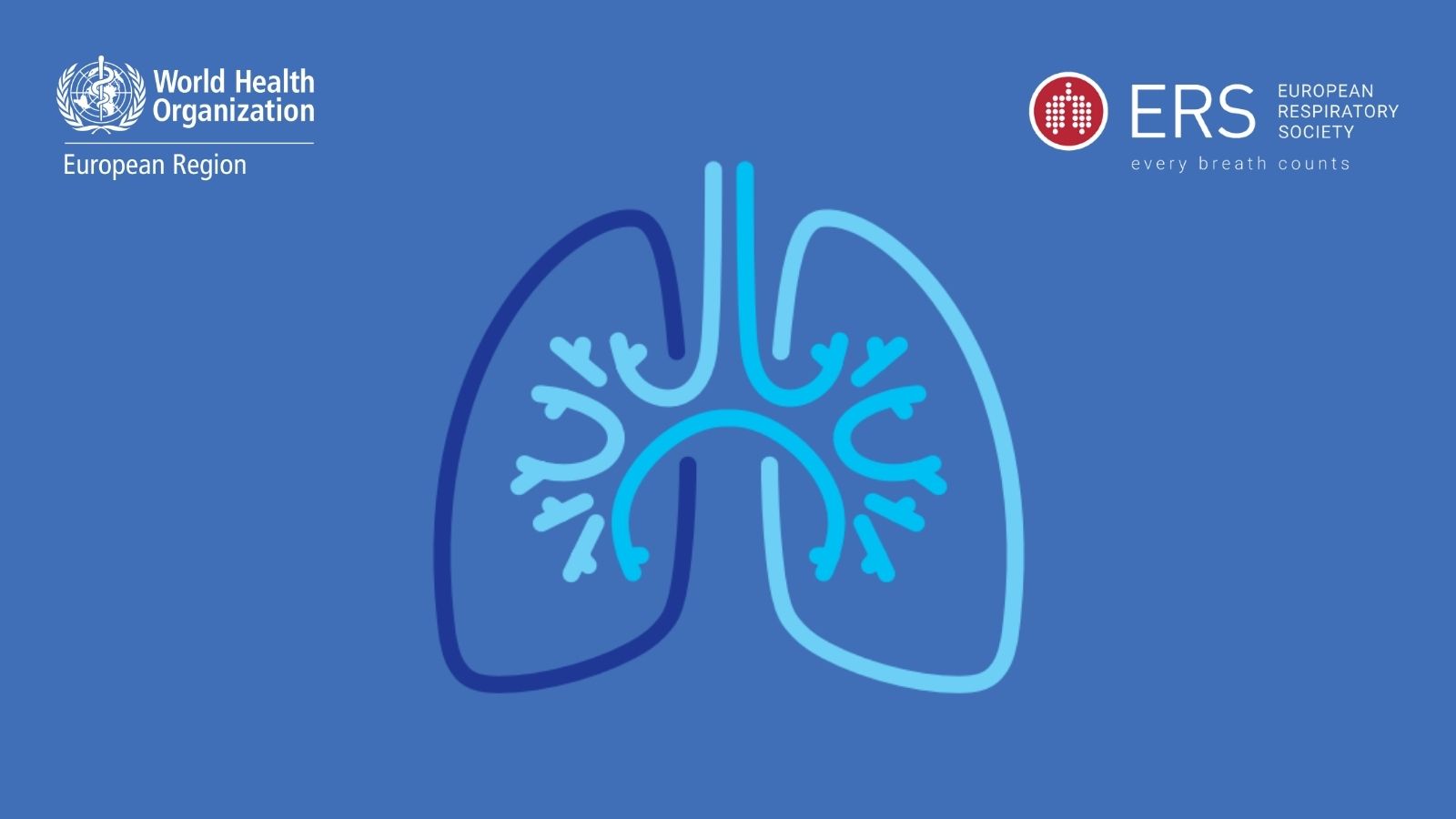12 June, 2025
A new report from WHO/Europe and the European Respiratory Society has revealed that chronic respiratory diseases (CRDs) – including asthma, COPD and other lung conditions – are vastly under diagnosed, poorly managed and significantly underestimated in their impact on health systems across the WHO European Region.
As the first WHO report of its kind, it highlights the true scale of the problem and calls for urgent, coordinated action.
Despite the fact that they are often preventable and treatable, CRDs are among the leading contributors to disability and death in the Region, particularly as underlying causes of cardiovascular diseases and cancer. They are currently the sixth-leading cause of death.
Alarmingly, diagnostic capacity and tools such as spirometry remain limited, primary healthcare services often misdiagnose or delay referrals, and health professionals lack sufficient training to identify CRDs early. High rates of comorbidities and complications, inadequate health information, and weak reporting systems may misattribute the cause of death, masking the true impact of untreated CRDs.
“This report shows that chronic respiratory diseases, which affect 81.7 million people in the WHO European Region, have long been overlooked due to insufficient policy focus and underfunding. This neglect has led to under diagnosis, misdiagnosis and incomplete data, costing the Region an estimated $21 billion annually,” said Dr Hans Henri P. Kluge, WHO Regional Director for Europe.
“To change this, we must strengthen health systems by making care for chronic respiratory diseases a core part of broader strategies for addressing noncommunicable diseases. Prevention is key – this means tackling risks such as smoking, air pollution and unsafe working conditions. We also need to boost research and innovation, set measurable targets, and invest in data and science.”
CRDs falling off the agenda
While earlier progress led to a decline in CRD mortality, the report highlights that this success has, ironically, led to reduced research funding and weakened surveillance. Global data exists, but regional tracking and coordinated action have fallen short. As a result, even though 81.7 million people in the Region are living with a CRD and 6.8 million are newly diagnosed each year, CRDs have slipped from policy priorities, leaving millions without the care and attention they need.
COPD and asthma account for the majority of CRD cases in the Region, and COPD is responsible for 80% of CRD-related deaths. Future projections indicate that COPD cases will rise globally by 23% between 2020 and 2050, with the steepest increases among women and in low- and middle-income countries. Hospitalisation and death from asthma also remain high, particularly among young people, despite the availability of effective treatments.
Tobacco and air pollution fuelling the growing respiratory health crisis
CRDs such as asthma, COPD and other lung diseases are rising across the Region, driven largely by preventable risk factors. Chief among them are tobacco use and exposure to polluted indoor and outdoor air.
Tobacco remains the single most avoidable cause of respiratory illness in the Region, where 25.3% of adults still smoke – well above the global average of 20.9%. Youth uptake of e-cigarettes and heated tobacco products is also raising potentially lifelong health risks, including lung damage.
At the same time, over 90% of people in the Region breathe air polluted with dangerous levels of particulate matter, far above WHO safety guidelines.
Lack of targets, investment, rehabilitation and palliative care
Professor Silke Ryan, ERS President, said: “We take 22,000 breaths a day, yet respiratory health remains one of the most neglected areas in global health. Chronic respiratory diseases are a major, under-recognised cause of death and disability and they demand urgent, collective action. This report is a vital first step towards change. It’s time to shift the mindset and make respiratory health a policy priority across the Region.”
The report also points to the economic cost of inaction: productivity losses due to CRDs among people aged 30 to 74 in the Region are estimated at over US$ 20 billion. Risk factors are often compounded in disadvantaged populations, where exposure to indoor smoke and unsafe work environments is higher, and access to essential medicines remains limited or unaffordable.
Call to action ahead of 2025 United Nations High-level Meeting
WHO/Europe is calling on governments, civil society and the health community to prioritise CRDs as part of broader noncommunicable disease (NCD) strategies in the lead-up to the 2025 High-Level Meeting of the United Nations General Assembly on the Prevention and Control of NCDs and the Promotion of Mental Health, taking place in September.
“Chronic respiratory diseases are deeply connected to other NCDs such as cardiovascular diseases, lung cancer, diabetes and mental health conditions,” underscores Dr Gauden Galea, WHO/Europe’s Strategic Adviser to the Regional Director.
He adds, “This first-ever regional report highlights how integrated action can reduce deaths from preventable and treatable causes. Guided by NCD best buys and quick buys – proven sets of cost-effective interventions with measurable health impacts – we could see real progress within five years.
“This report gives countries practical solutions and shared experiences to support a life-course approach and help build a resilient Region that is NCD- and mental health-ready by 2050.”
View the report from WHO/Europe and the European Respiratory Society in full.





